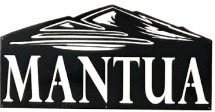History
In the past, our lovely town has been known by various names such as Little Valley, Flaxville, Geneva, Hunsaker Valley, Little Copenhagen, and Box Elder Valley. Mantua, nestled in a small basin approximately a mile wide and just over two miles long, is surrounded by majestic mountains. A significant trail, well-known to the Shoshone tribe and early mountain men, winds up the East mountainside, stretching from the southern end of Cache Valley, through Mantua, and into Brigham City. Today, remnants of the original trail can still be seen.
In the spring of 1863, a dozen Danish families ventured to settle in the valley. The town's cool nights and short growing seasons were perfect for cultivating flax. While the flax was too rough for clothing, it produced strong fibers ideal for rope and thread. The Danish settlers established their homes in the northwestern part of the valley along Halling Creek, initially living in dugouts before upgrading to log houses.
During the town's early days, there were some conflicts with the indigenous people already residing in the area. In 1864, a rock fort was constructed where the old church now stands, but it was eventually abandoned as relations improved. The Shoshone tribe often assisted settlers in harvesting grain, which had to be cut by hand, and were rewarded with a portion of the crop as payment.
Records show that Mantua was a stop on the Pony Express trail in 1859. Brigham Young appointed Samuel Alonzo Whitney Jr. to deliver mail from Cache Valley to Box Elder County. Sam, who had a missing arm due to a threshing accident, was well-regarded by the Shoshone people, who referred to him as "Burrowit," meaning "one arm gone." Samuel also served as an interpreter for Chief Washakie of the Shoshone and Chief John of the Sioux, bridging communication between different communities.

